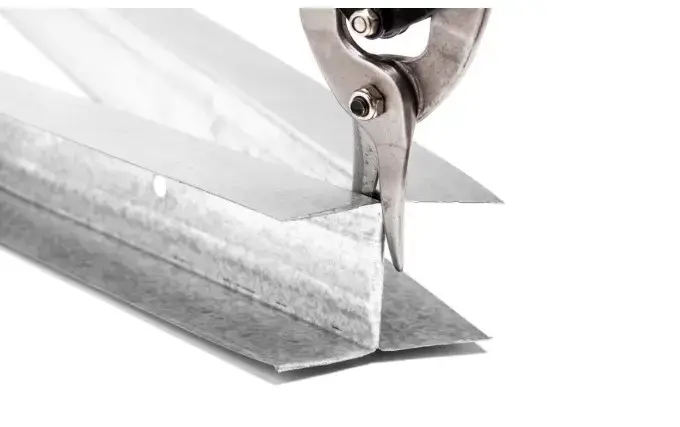Metal profiles are widely used in repairs, construction, furniture production and many other areas. In this article we will look at various types of tools that will help cut a metal profile into pieces of the required length - an angle grinder, a hacksaw, a reciprocating saw, scissors, we will tell you how to use them safely. We will also give advice on the correct cutting technique and share secrets that will help you get a clean and neat cut.
Bulgarian
A grinder, or angle grinder, is capable of cutting profiles of various thicknesses and shapes. The tool is suitable for cutting metals such as steel, aluminum and stainless steel. It is important to choose the right cutting disc for the specific type of metal and its thickness. When cutting, you need to use safety glasses, gloves and a respirator, as a large amount of sparks and metal dust are generated.
The grinder provides a fairly fast and relatively clean cut, but it also requires reliable fixation of the profile and the ability to work with the tool to avoid disc displacement and uneven cuts.
Hacksaw
A hacksaw is a hand tool. It consists of a frame onto which a narrow and long saw blade with fine teeth is stretched. The tool is inexpensive, provides a more accurate and neat cut than a grinder, and does not require special skills. The cut is narrower, which can sometimes be an advantage.
The hacksaw is suitable for cutting thin metal profiles such as angles, strips and small diameter pipes. However, when cutting with a hand tool, you will need a lot of muscle strength and the process itself will take longer than working with a power tool. In addition, a hacksaw is not suitable for thick metal profiles.
Reciprocating saw
A reciprocating saw is a powerful electric tool. To work on metal, you need to install a special saw blade. The principle of operation is similar to the operation of a hacksaw for metal, but the saw, due to the electric drive, performs cutting much faster and with less physical effort.
A reciprocating saw is suitable for cutting thick metal profiles, pipes, fittings and other elements. It provides a rougher and faster cut than a hacksaw, but requires the correct selection of the saw blade for the specific material. Just like when working with an angle grinder, you must use protective equipment. A reciprocating saw is more convenient when working in hard-to-reach places, due to its compact shape, than an angle grinder.
Hand metal shears
Hand metal shears have a simple design , consisting of two blades connected by a hinge. It will take some effort to cut the material. This tool is used for cutting thin profiles, but not for thick metal. They allow you to make clean and even cuts without creating a lot of sparks and dust, but they require some skill and are not suitable for curved cutting.
Tips for cutting metal profiles
Correct technique for cutting metal profiles – this is the key to high-quality results and work safety. Some tips and recommendations:
choose a tool that matches the type and thickness of the metal profile;
always wear goggles, protective clothing, Observe safety precautions;
securely fix the profile before starting cutting. Use a vice or clamps;
before cutting, apply markings;
after cutting, clean the cut from burrs using a file or grinder .
Do not use damaged or worn cutting discs and saw blades.
In chain hypermarkets you will find a wide range of repair products assortment hacksaws, grinders, and all the necessary consumables. Also in the catalog you will find construction knives and other tools for cutting drywall and wallpaper , plastic panels, linoleum and other materials. Choosing the right tool depends on the type of profile, scope of work and your budget.





